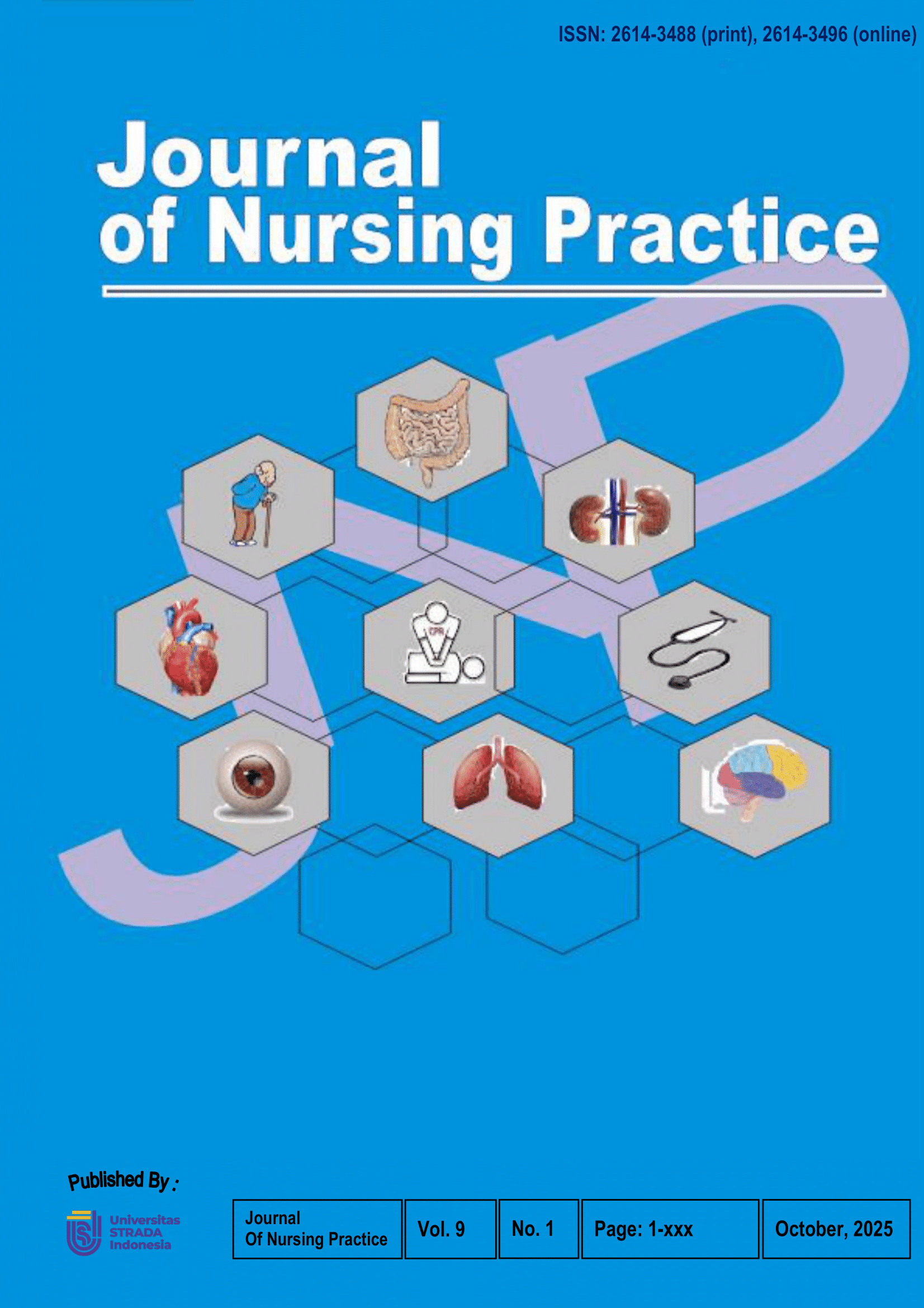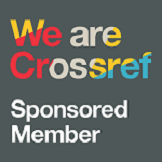Effect of A Booklet Media on Increasing the Knowledge of Complementary Feeding among Mothers in South Tangerang, Indonesia
DOI:
https://doi.org/10.30994/jnp.v9i1.914Keywords:
booklet, children, complementary feeding, mother's knowledgeAbstract
Background: Nutritional issues among toddlers remain a serious problem in Indonesia. The age of 6–24 months is a critical period in the growth and development of toddlers. Furthermore, children aged 12–23 months were more likely to meet complementary foods (e.g., minimum dietary diversity and minimum acceptable diet) than those younger, indicating that the older the child is, the greater the possibility of them meeting minimum complementary foods. Therefore, understanding complementary foods among mothers is essential for meeting the nutritional needs of children aged 6–11 months.
Purpose: To compare mothers' knowledge about complementary foods for children aged 6–11 months in the intervention and control groups in South Tangerang.
Methods: This research utilized a quasi-experimental design with a pretest-posttest control group design, carried out between August to September 2022. Participants (n=40) were selected through simple random sampling and then divided into intervention group (n=20) or the control group (n=20). To assess differences in knowledge changes between the two groups, the Wilcoxon signed-rank test was applied in the analysis.
Results: The mean scores in the intervention group before and after receiving the booklet were 50.5 and 75.5, respectively. This implies a significant difference between complementary food knowledge mothers in the pre-test and post-test (p-value £0.05). On the other hand, the control group's mean value did not change significantly (pre-test 51.5 and post-test 50.5; p-value >0.05).
Conclusion: The present study suggests that the booklet intervention had an impact on increasing mothers' understanding of complementary foods. Thus, health education through booklets is useful in changing knowledge and might be used in posyandu.
Downloads
References
Andriani, R., Supriyatno, B., Kekalih, A., & Rusli Sjarif, D. (2023). Development, validity, and reliability of a questionnaire on mothers’ knowledge in complementary feeding practices (PI-MPASI) in Indonesia. Paediatrica Indonesiana, 63, 335-345. doi:10.14238/pi63.5.2023.335-45.
Arikpo, D., ES., E., Chibuzor, M. T., Odey, F., & Caldwell, D. M. (2018). Educational interventions for improving primary caregiver complementary feeding practices for children aged 24 months and under. Cochrane Database Syst Rev.(1469-493X (Electronic)).
Arini, F., Sofianita, N., & Ilmi, I. (2017). Pengaruh Pelatihan Pemberian MP ASI Kepada Ibu dengan Anak Baduta Di Kecamatan Sukmajaya Kota Depok Terhadap Pengetahuan dan Perilaku Pemberian MP ASI. Jurnal Kedokteran dan Kesehatan, 13, 80. doi:10.24853/jkk.13.1.80-89.
Binamungu, J. A.-O., Kimera, S. I., & Mkojera, B. (2023). Maasai mother's knowledge on complementary feeding practices and nutritional status of children aged 6-24 months in Monduli District, Arusha, Tanzania: A case study of Naitolia village. Food science & nutrition(2048-7177 (Print)).
Bolzern, J. E., Mitchell, A., & Torgerson, D. J. (2019). Baseline testing in cluster randomised controlled trials: should this be done? BMC Medical Research Methodology, 19(1), 106. doi:10.1186/s12874-019-0750-8.
Diamond-Smith, N., Gopalakrishnan, L., Walker, D., Fernald, L., Menon, P., & Patil, S. (2022). Is respectful care provided by community health workers associated with infant feeding practices? A cross sectional analysis from India. BMC Health Services Research, 22(1), 95. doi:10.1186/s12913-021-07352-w.
Kabir, M. A.-O. (2022). How do traditional media access and mobile phone use affect maternal healthcare service use in Bangladesh? Moderated mediation effects of socioeconomic factors. PLoS One(1932-6203 (Electronic).
Linton, D., Porteous, J., Eatson, H., Chepesiuk, R., Long, T., Inrig, T., . . . Sale, J. (2020). Educational booklet reinforces knowledge of osteoporosis and influences intentions to improve bone health in previously diagnosed and treated patients. Osteoporosis International, 31, 1-9. doi:10.1007/s00198-020-05392-2.
Masilela, L. N., & Modjadji, P. A.-O. (2023). Child Nutrition Outcomes and Maternal Nutrition-Related Knowledge in Rural Localities of Mbombela, South Africa. LID - 10.3390/children10081294 [doi] LID - 1294. Children.(2227-9067 (Print)).
Ministry of Health of the Republic of Indonesia. (2023). Indonesia Health Survey 2023 in Numbers, Accurate Data, Precise Policy. Retrieved from https://www.badankebijakan.kemkes.go.id/en/ski-2023-dalam-angka/.
Nurokhmah, S., Middleton, L., & Hendarto, A. (2022). Prevalence and Predictors of Complementary Feeding Practices Among Children Aged 6-23 Months in Indonesia. J Prev Med Public Health.(2233-4521 (Electronic).
Schleider, J. L., & Beidas, R. S. (2022). Harnessing the Single-Session Intervention approach to promote scalable implementation of evidence-based practices in healthcare. Frontiers in Health Services, Volume 2 - 2022.
Solikha, D., Ali, P., Nadjib, M., & Hafidz, F. (2020). Costs to Achieve Indonesia's Mid-Term Development Plan (RPJMN) 2020-2024 Targets: A Primary Healthcare Costing Approach Using the OneHealth Tool. Retrieved from.
Taha, Z. A.-O., Garemo, M., & Nanda, J. (2020). Complementary feeding practices among infants and young children in Abu Dhabi, United Arab Emirates. BMC Public Health.(1471-2458 (Electronic).
UNICEF. (2020). Improving Young Children’s Diets During the Complementary Feeding Period. UNICEF Programming Guidance. Retrieved from https://www.unicef.org/documents/improving-young-childrens-diets-during-complementary-feeding-period-unicef-programming.
White, J. A.-O., Drummond, E., Bijalwan, V., Singhkumarwong, A., Betigeri, A., & Blankenship, J. (2023). Micronutrient gaps during the complementary feeding period in seven countries in Southeast Asia: A Comprehensive Nutrient Gap Assessment. Matern Child Nutr.(1740-8709 (Electronic).
World Health Organization. (2023). WHO Guideline for complementary feeding of infants and young children 6–23 months of age. Retrieved from https://www.who.int/publications/i/item/9789240081864.
Yuniartika, W., & Nur Hidayati, D. A. (2021). Improving Knowledge of Diabetes Mellitus Patients Using Booklet. Journal of Medicinal and Chemical Sciences, 4(3), 238-245. doi:10.26655/JMCHEMSCI.2021.3.4.
Downloads
Published
How to Cite
Issue
Section
License
Copyright (c) 2025 Journal Of Nursing Practice

This work is licensed under a Creative Commons Attribution-NonCommercial-ShareAlike 4.0 International License.

This work is licensed under a Creative Commons Attribution-NonCommercial-ShareAlike 4.0 International License.






















